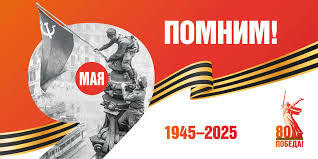01.04.07 - CONDENSED MATTER PHYSICS
HIGHER CERTIFICATION COMMITTEE
MINIMUM PROGRAM
PhD Examination
Physicomathematical and Technical Sciences
01.04.07 – Condensed Matter Physics
Introduction
The program is based on the principle divisions of Condensed Matter Physics.
The program was developed by the Expert Council of the Higher Certification Physics Committee of the Board of Education of the Russian Federation, by the Moscow State University, the Institute for Physics of Metals, the Ural Division of the Russian Academy of Sciences, the Lebedev Physical Institute of the Russian Academy of Sciences and the Baikov Institute of Metallurgy of the Russian Academy of Sciences.
- Bonding Forces in Solids
- Solid State Symmetry
- Defects in Solids
- Crystal Diffraction
- Lattice Vibrations
- Thermal Properties of Solids
- Electron Properties of Solids
- Magnetic Properties of Solids.
- Optical and Magnetooptical Properties of Solids
- Superconductivity
Atomic electron structure. Chemical bond and valence. Types of bonding force in condensed matter: Van der Waals bond, ionic bond, covalent bond, metallic bond.
Chemical bond and short-range order. Structure of matter with unidirectional interaction. Samples of close packed arrangement crystal structures: BCC, FCC, HCP, CsCl–, NaCl-types , CaTiO3 perovskite -type structure.
Main properties of covalent bond. Covalent bond structure of matter. Selenium-type structure. Hybridization of atomic orbits in molecules and crystals. Diamond- and graphite-type structure.
Crystalline and amorphous solids. Translational invariance. Basis and crystalline structure. Unit cell. Wigner-Seitz cell. Bravais lattice. Angle, direction and plane notations in crystals. Reciprocal lattice and its properties. Brillouin zone.
Elements of crystal symmetry: rotations, reflections, inversion, inversion rotation, translation. Symmetry transformation operations. Group theory, symmetry groups. Possible orders of rotation axes in crystals. Spatial and point groups (crystal classes). Classification of Bravais lattices.
Point defects, their formation and diffusion. Vacancies and interstitial atoms. Frenkel pairs and Schottky defects.
Linear defects. Edge and screw dislocations. Role of dislocations in plastic deformation.
Wave propagation in crystals. X-ray, neutron and electron diffraction in crystals. Elastic and inelastic scattering. Bragg reflection. Atomic and structural factors. Diffraction on amorphous matter.
Crystal lattice vibrations. Equations of atomic motion. Simple and complex one-dimensional atomic chains. Elastic wave dispersion law. Acoustical and optical vibrations. Vibration quantization. Phonons. Electron-phonon interaction.
Heat capacity of solids. Lattice heat capacity. Heat capacity of electrons. Temperature dependence of lattice and electron heat capacity. Classical specific heat theory. Law of equalized distribution of energy by degrees of freedom in classical physics. Limits of validity of classical theory.
Einstein and Debye quantum theory of specific heats. Limiting cases of high and low temperatures. Thermal expansion of solids, its physical origin. Anharmonic vibrations.
Lattice and electron heat conductivity. Wiedemann-Franz law for electron heat capacity and heat conductivity.
Electron properties of solids: main experimental factors. Conductivity, Hall effect, thermal electromotive force, optical absorption. Problems of explanation by classical Drude-Lorentz theory.
Main approximations of zone theory. Born –Karman boundary conditions. Bloch theorem. Bloch functions. Quasi-impulse. Brillouin zones. Energy zones. Bragg electron reflection during crystal motion. Band energy spectrum. Tight binding electron approximation. Interaction of allowed band width with overlap of atomic wave functions. Dispersion law. Tensor of inverse effective mass.
Almost free-electron approximation. Bragg electron reflection. Electron filling of energy zones. Fermi surface. State density. Metals, dielectrics and semiconductors. Semimetals.
Magnetization and susceptibility. Diamagnets, paramagnets and ferromagnets. Curie- and Curie-Weiss laws. Paramagnetism and diamagnetism of electron conductivity.
Ferromagnetism nature. Phase transition into ferromagnetic state. Role of exchange interaction. Curie point and susceptibility of ferromagnets. Ferromagnetic domains. Reasons for domain occurrence. Bloch and Neel domain boundaries.
Anti-ferromagnets. Magnetic structure. Neel point. Anti-ferromagnets susceptibility. Ferromagnets. Magnetic structure of ferromagnets. Spin waves, magnons. Motion of magnetic moment in constant and variable fields. Electron paramagnetic resonance. Nuclear magnetic resonance.
Complex permeability and optical constants. Absorption and reflection ratios. Kramers-Kronig relation.
Light absorption in semiconductors (interband and impurity absorption, free carrier and lattice absorption). Determination of main semiconductor properties by optical experiments.
Magneto-optical effects: (Faraday, Voigt and Kerr effects).
Penetration of high frequency field into conductor. Normal and anomalous skin effects. Skin layer thickness.
Superconductivity. Critical temperature. High temperature superconductors. Meissner effect. Critical field and critical current. Types I and II superconductors. Their magnetic properties. Abrikosov vortices. Magnetic field penetration depth in sample.
Josephson effect.
Cooper pairing. Coherence length. Energy gap.





